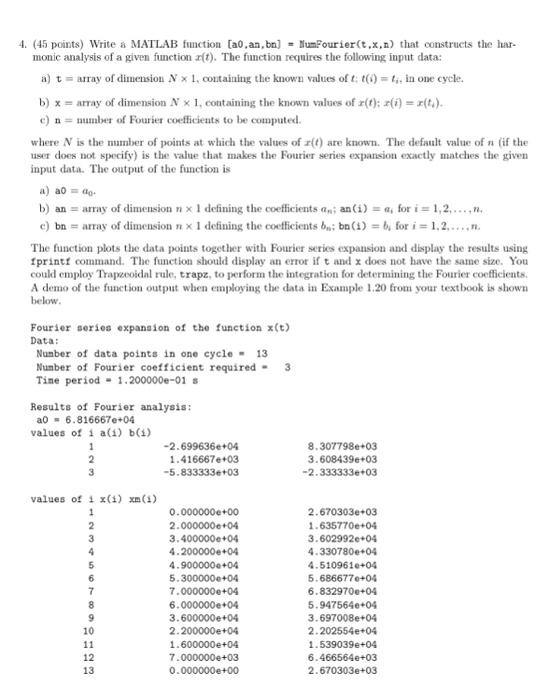Answered step by step
Verified Expert Solution
Question
1 Approved Answer
4. (45 points) Write o MATLAB function [a0, an, bn] = NumFourier (t,x,n) that constructs the harmonic analysis of a given function x(t). The function

Step by Step Solution
There are 3 Steps involved in it
Step: 1

Get Instant Access to Expert-Tailored Solutions
See step-by-step solutions with expert insights and AI powered tools for academic success
Step: 2

Step: 3

Ace Your Homework with AI
Get the answers you need in no time with our AI-driven, step-by-step assistance
Get Started


